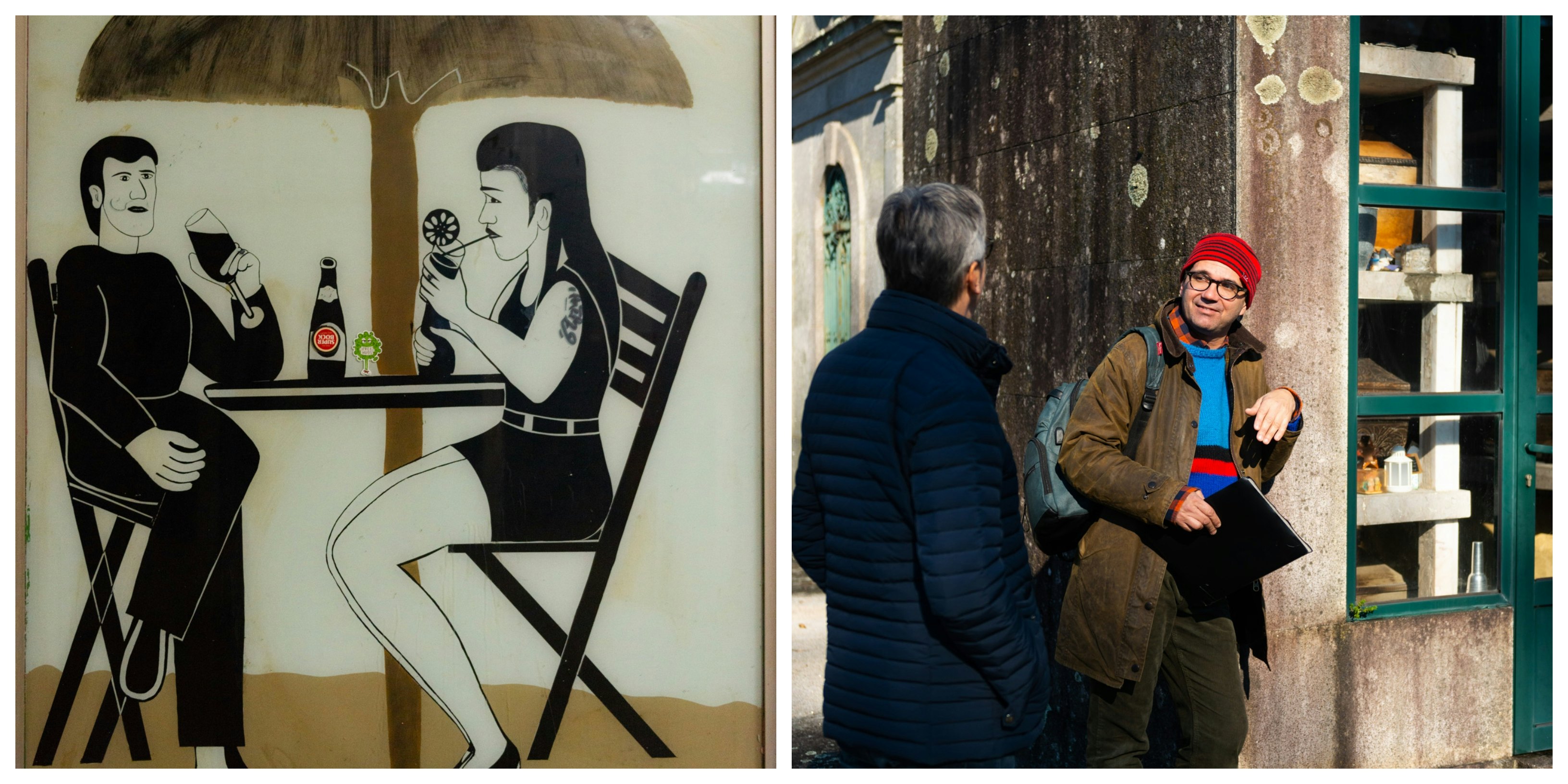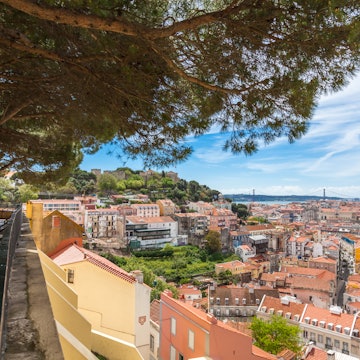
Give it a try: why you need to discover Porto's worst architecture on this tour

Mar 15, 2023 • 5 min read

Pedro, the host of "The Worst Tours" in Porto © Austin Bush
Lonely Planet’s “Give It a Try” series makes a case for mainstream travel experiences that most consider too touristy or unsophisticated. Austin Bush discovers why Porto’s “Worst Tour” might be the perfect way to get under the skin of Portugal’s second city.
Walking tours are undoubtedly one of the best ways to get your bearings in a new city. But what about a tour that bills itself as “one of the worst tours in the world...or at least in Porto”? It doesn’t sound promising, especially when the website blurb asks visitors to “lower your expectations.”
Nonetheless, I was intrigued.
Meet Pedro, the host of the “worst tour in the world”
Upon meeting him, Pedro Figueiredo seemed, quite frankly, a bit flustered. Perhaps even unprepared. But this is part of the charm of The Worst Tours, a set of eclectic, frenetic, architecture-focused walks he leads around Porto, Portugal.
A former architecture student and occasional architect today, Pedro started the tours with two colleagues back in 2012. They’ve since moved on to different projects; these days, The Worst Tours is just Pedro.
We meet in late January at Jardim Marques de Oliveira, Porto’s oldest public park, where Pedro pulls out a binder stuffed with hand-drawn maps, architectural drawings peppered with notes, black-and-white photos with scribbled text and color-coded documents that looked like they might have top-secret classification. The binder will reappear several more times during our walk.

“We are Portugal! We copy and paste from other places”
“Have you been to the city center?” Pedro asks us, essentially a rhetorical question as our walk would not focus on Porto’s big-hitter sights. Instead, Pedro refers to one of his custom maps and explains that we will be spending most of our time just east of the city’s historical center, in an area known as Bonfim.
Bonfim was at one time a bourgeois neighborhood, Pedro tells us, something still apparent today in the smattering of imposing mansions built by the wealth extracted from Portugal’s colonies, especially Brazil, in the 18th and 19th centuries. Walking past these massive private homes with large-scale doors prompts Pedro to comment, “Welcome to Porto, the only city with big doors and small people!”
He explains that industrialization in the 20th century led to the area’s depopulation and the abandonment of many of the houses. It’s only in the last decade, via increasing gentrification, Pedro tells us, that this once-elegant neighborhood is again returning to its former glory.

In addition to mansions, Bonfim is also home to row houses, and we walk past charming, narrow-fronted, typically tile-fronted structures. Pedro points out buildings with architectural influences imported from Amsterdam, Paris, and London saying, “We are Portugal! We copy and paste from other places, and things arrive here late!” Pedro tells us that in addition to serving an aesthetic purpose, ceramic tiles act as a “jacket” in cold, often wet Porto, protecting porous granite buildings from the damp.
“This is the worst tour of the day”
In line with Pedro’s vibe, our tour didn’t follow any chronological timeline. Rather, we popped into whatever building or structure that seemed to appeal to him in that moment. A former 18-century convent turned library had beautiful wall tiles (“tiles are ‘cultural appropriation’ from the Moors!”). And while semi-abandoned mall Centro Commercial STOP revealed elements of its former life as an ’80s- and ’90s-era shopping center, in recent years the space has been reappropriated as a rehearsal space for bands. As we somewhat warily proceed up a dark, graffiti-lined stairway to the beat of a kick drum, Pedro exclaims, “This is the worst tour of the day!”

Stopping for coffee gives us the chance to ask Pedro about the topic most fascinating to visitors of any city: real estate. Porto has seen massive increases in rents and real estate prices in recent years, putting a squeeze on locals. He explains that, between 1916 and 2012, there was essentially no rental market in Porto, as rents were controlled by the state. It was only after the financial meltdown and Portugal’s 2011 bailout from the IMF that the city’s rental market was liberalized.
Tourism followed, and today rents in Porto are, according to Pedro, “bipolar” – either comically cheap or far out of reach for most locals. Pedro himself was lucky enough to have secured a loan to buy an apartment, but he tells us about a friend who’s struggling to find an apartment for under €800 (minimum wage in Portugal is €760 per month). I ask Pedro how he thinks tourism has affected the city.
“The last 10 years of tourism have been bad and good,” he says. “Gentrification has led to housing prices being the highest we’ve ever seen. But there’s lots of renovation, which has led to more work for architects.”

A graveyard of dad jokes
A walk through a graveyard is peppered with dad jokes and self-deprecating quips (“we are the worst tour – we show you the ugly things!”) before we emerge at one of Porto’s dramatic riverside cliffs. From a formerly bourgeois, now increasingly gentrified neighborhood, we’ve entered one of Porto's 500 ilhas or “islands”: informal (and sometimes illegal) low-income communities that Pedro refers to as “proletariat Airbnbs.” He points out a row of shared toilets that boast astounding views over the Douro River by stating, “Welcome to Porto!”

“One more moment to bore you with this shit,” says Pedro as he opens his binder for the last time. He shows us diagrams illustrating how growth, industry and economics that have shaped Porto’s architecture, drawing parallels, for example, between the ring-like formation of the convent we visited the donut-like form of the city’s contemporary sprawl.
We have arrived at Porto’s São Bento Train Station, our only foray into the city center and the terminus of The Worst Tour. We pay what we think is fair (Pedro works on tips); Pedro walks away. I can only assume he’s setting off in a frenetic, distinctly indirect line, peeking in a foyer or two along the way to admire the tiles.















